When it comes to solo backpacking tents, I’ve tested my fair share – some too cramped, some too heavy, and others that barely stood up to the elements. But the MSR FreeLite 1? It strikes an intriguing balance.
Its semi-freestanding design promised more space than most, and once pitched, it delivered with a liveable, airy interior. The trade-off is that it’s not the most bombproof shelter out there, but at just 909g, it’s an ultralight dream for long-distance hikers.
Pros
- Ultralight
- Excellent internal space
- Effective ventilation
- Taut structure
Cons
- Underwhelming waterproofing stats
- Not the most weather resistant
| RRP | £450 / $435 |
| Internal dimensions (LxW) | 221 x 84cm |
| Internal peak height | 100cm |
| Packed size | 50 x 12cm |
| Weight | 909g / 32oz |
Shape, structure, pitching, and internal liveability
The MSR FreeLite 1 provides more liveability than most one-person tents thanks to its dome shape and clever design. The combination of its semi-freestanding, hubbed pole architecture and transverse cross bar is similar to that used in Sea to Summit’s popular Alto and Telos shelters.
The Y-shaped pole structure provides the structural integrity, while the cross bar pulls the sides of the inner tent outwards, creating a wide living space and, crucially, more headroom.
If you’ve not pitched a tent like this before, setting it up takes a couple of practices, but it doesn’t take long to master. After laying out the inner and assembling the poles to create the Y-shaped hub, the tips attach to three eyelets, two at one end of the inner and one at the other.
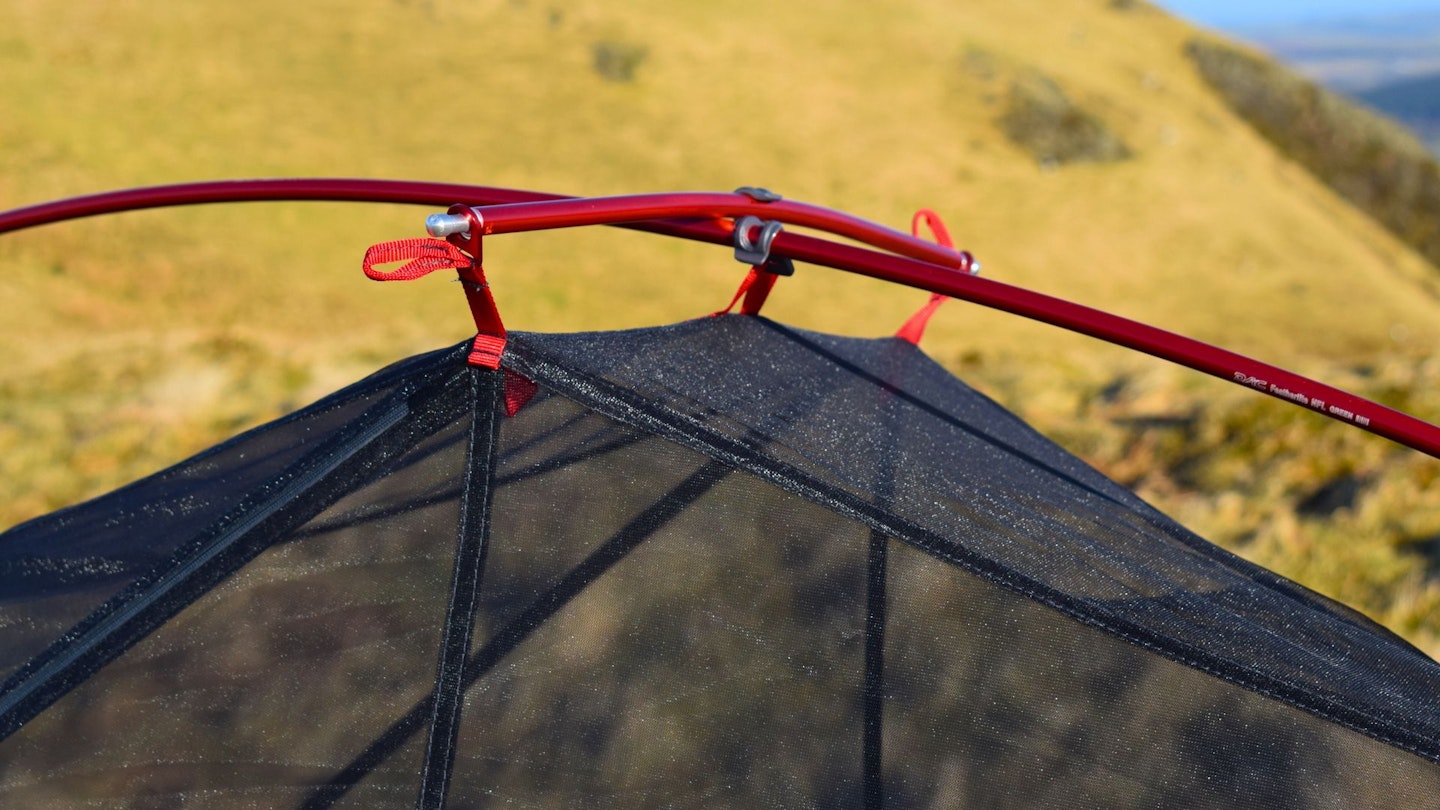
This creates a long ridge with the cross bar wobbling about at the apex. However, once I attached the inner tent to the skeleton using the appropriate hooks and clips, the cross bar became fixed in place, pulling the side walls out and upward. It’s this that produces such a wonderfully liveable space.
Attaching the flysheet was relatively simple too. Having thrown it over, I simply attached the front via two eyelets, pegged out the sides and secured the back by popping the cord loops through pegs at the tent’s rear.
I found the inner sanctum to be a much more comfortable space than those seen in other one-person tents. I’m not saying it’s palatial – we’re dealing with a lightweight solo shelter here, after all – but MSR’s great design makes it a pleasant space.
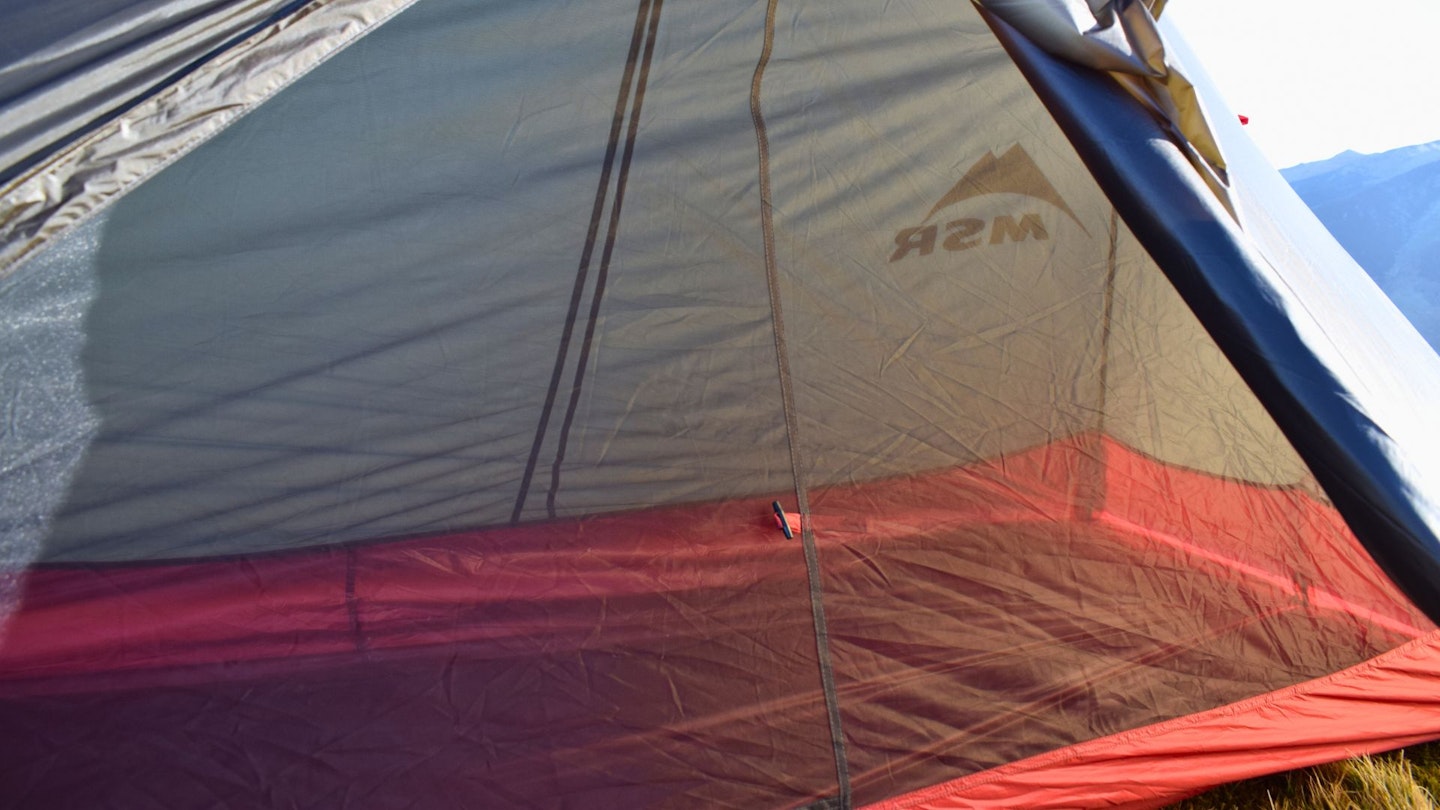
Admittedly, it’s a little narrow: the inner tent measures 221 x 84 cm, yet it feels wider than others thanks to a rectangular floorplan that doesn’t taper, as well as its steep interior walls.
If you’re lucky enough to get a dry, warm, clear night, you can pitch the inner on its own and stargaze from the comfort of your sleeping bag. If only our islands weren’t so often cursed by wet and windy westerlies.
Waterproofing
I suspect that MSR, an American company, designed the FreeLite with the drier climate found on the opposite side of the Atlantic in mind. It’s the fact that the inner tent is virtually all mesh and that the fly and groundsheets have a relatively low hydrostatic head (HH) ratings that fuel the fire of this suspicion.
Let’s look at the HH ratings and see how they compare to some of the competition. The 15-denier ripstop nylon flysheet features a DuraShield silicone coat and polyurethane backer, achieving a HH of 1,200mm.
This is considerably less than the average one-person backpacking tent. As an example, Terra Nova’s new Wild Country Halny Elite 1 boasts a rainfly with an HH of 4,000mm. Then there’s the fact that the FreeLite’s groundsheet is, on paper at least, no more protective – again, at 1,200mm.
Eyebrow raised? Certainly. Haven’t MSR ever been to rain-battered North Wales?
Hydrostatic head is not the be-all-and-end-all when it comes to how well a tent repels rain, something that MSR’s tent design boffins are keen to assert. Their arguments are that the coatings applied to the flysheet, along with the DuraShield polyurethane backer and DWR treatment applied to the groundsheet, ensure high levels of protection.
Beyond this, they point to the weave of the fabrics themselves, which feature a tight, high-density thread count for further protection. Then, there’s those taut, steep walls, achieved thanks to the cross bar design.
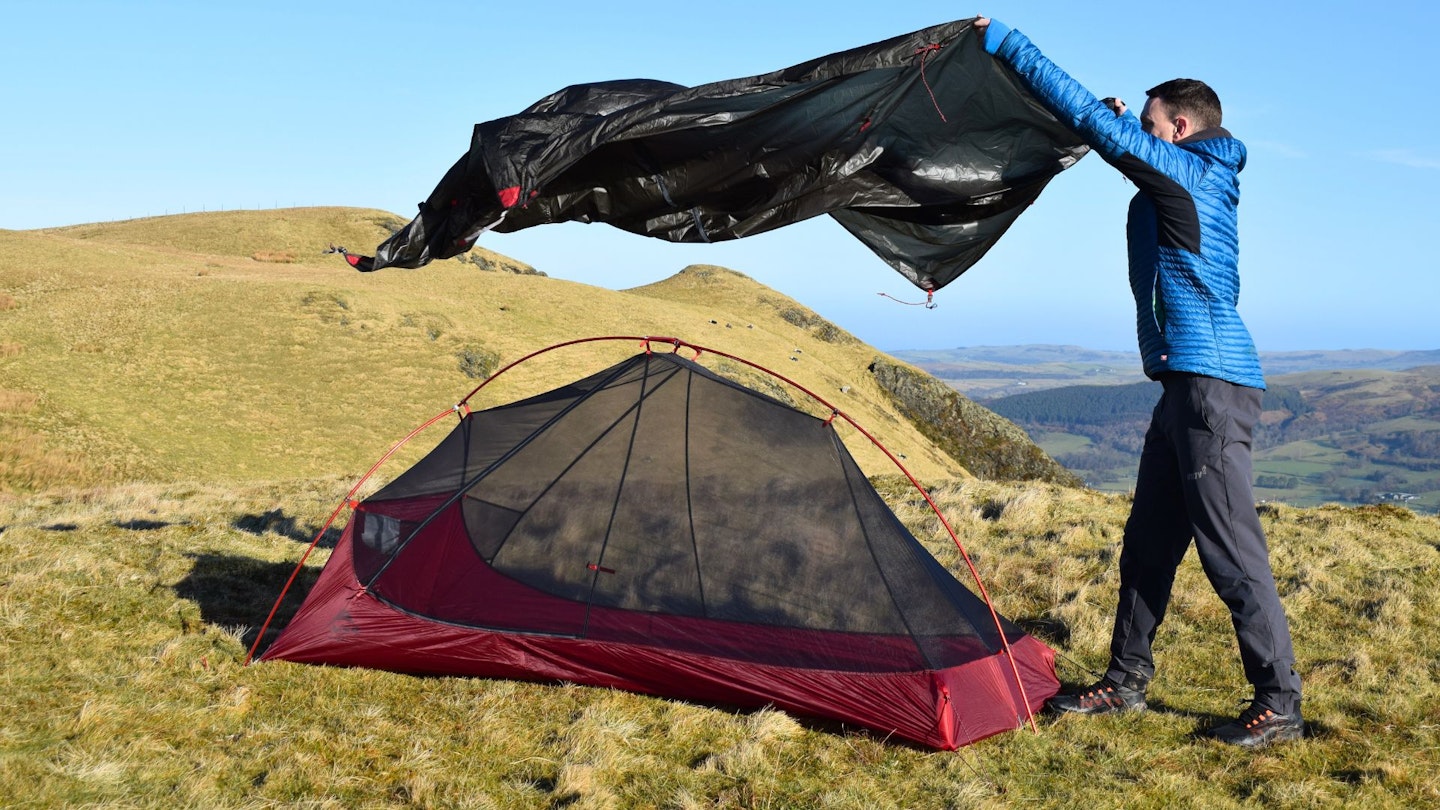
Water runs off near vertical surfaces, unlike on tents with shallower walls, where it has a habit of pooling.
MSR go on to stress that tent’s taped seams are of exceptional quality, saying they use a manufacturing process known as “reinforced infinity bar tacks and lap-felled seams”.
I’ll cut through the jargon to say that the seams are well stitched, secure and durable. The bathtub groundsheet also helps to keep water ingress at bay, even if its HH rating is one of the lowest out there.
If you want more protection on your sleeping surface, you can buy MSR’s universal one-person footprint (sold separately). The large version (211x81cm) will add 198g of weight to your tent, but a good level of added durability and robustness to your groundsheet.
So, how did the FreeLite 1 fare on test when it came to keeping the rain out? Well, I found that it generally performed well, despite the concerns over the low HH ratings. It repelled rain nicely and generally coped fine with the odd heavy downpour.
I used the two-person version – the MSR FreeLite 2 – on a 700km hike of the Alpine Passes Trail in Switzerland, wild camping in it alongside my partner for over 20 nights. The FreeLite 2 has the same fabrics as the FreeLite 1 and, even in some atrocious alpine storms, these materials held up strongly and kept us dry 90% of the time in gnarly conditions.
I was generally quite impressed, even if we did get a tiny bit damp on a few rare occasions. For the overall weight and shape of the tent, it was more weatherproof and hardy against rough conditions than I expected.
However, I would clarify that ultimately this tent does compromise some waterproofing protection in favour of a low weight – it’s a truly ultralight tent, after all. Consequently it’s not as bombproof as some others and it’s not the best one to rely on in really wet weather during the shoulder seasons, particularly if you know the forecast is bad.
Condensation
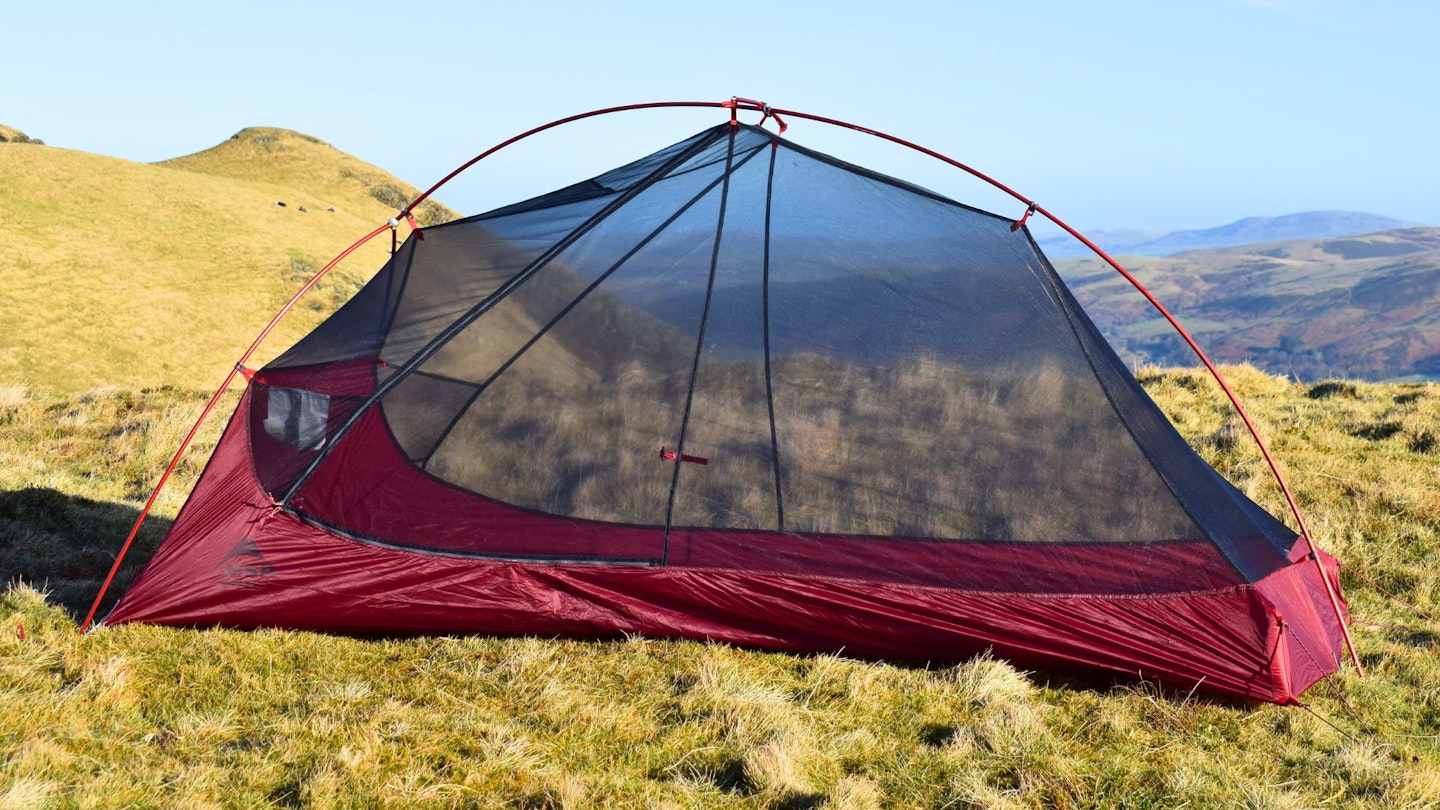
While the FreeLite may not be my go-to for wet weather camping, it’s certainly an attractive option for getting up high and escaping muggy conditions during a July heat-wave. This is because ventilation is superb – this is one of the airiest tents around.
For starters, the inner tent is basically entirely made of mesh, which allows warm air to escape readily. Then there’s the gap around the bottom of the flysheet when it’s pegged out. This design is ideal for ventilation but not so great for bombproof wind and water protection.
All in all though, if you can’t avoid condensation while sleeping in this tent, you never will.
Wind protection
It seems, where one-person tents are concerned, that liveability comes with a catch. While high walls and a domed profile provide a roomier interior with the added bonus of more porch space, it makes for a tent that’s more susceptible to the wind.
The high side walls can catch gusts like a ship’s sail. In short, it’s vulnerable to being swiped from the side. Let me give you an example…
I was pitching the FreeLite 1 in my garden in some atrocious Cumbrian weather, with the Met Office predicting 50mph gusts – a good experiment, I thought.
I had the inner pitched and pegged down, and was just about to throw the flysheet over, when a gust side-swiped the tent. The pegs ripped out of my (albeit very soft, loose and muddy) lawn and the entire tent soared into the air, flew over my fence and landed in my neighbour’s garden.
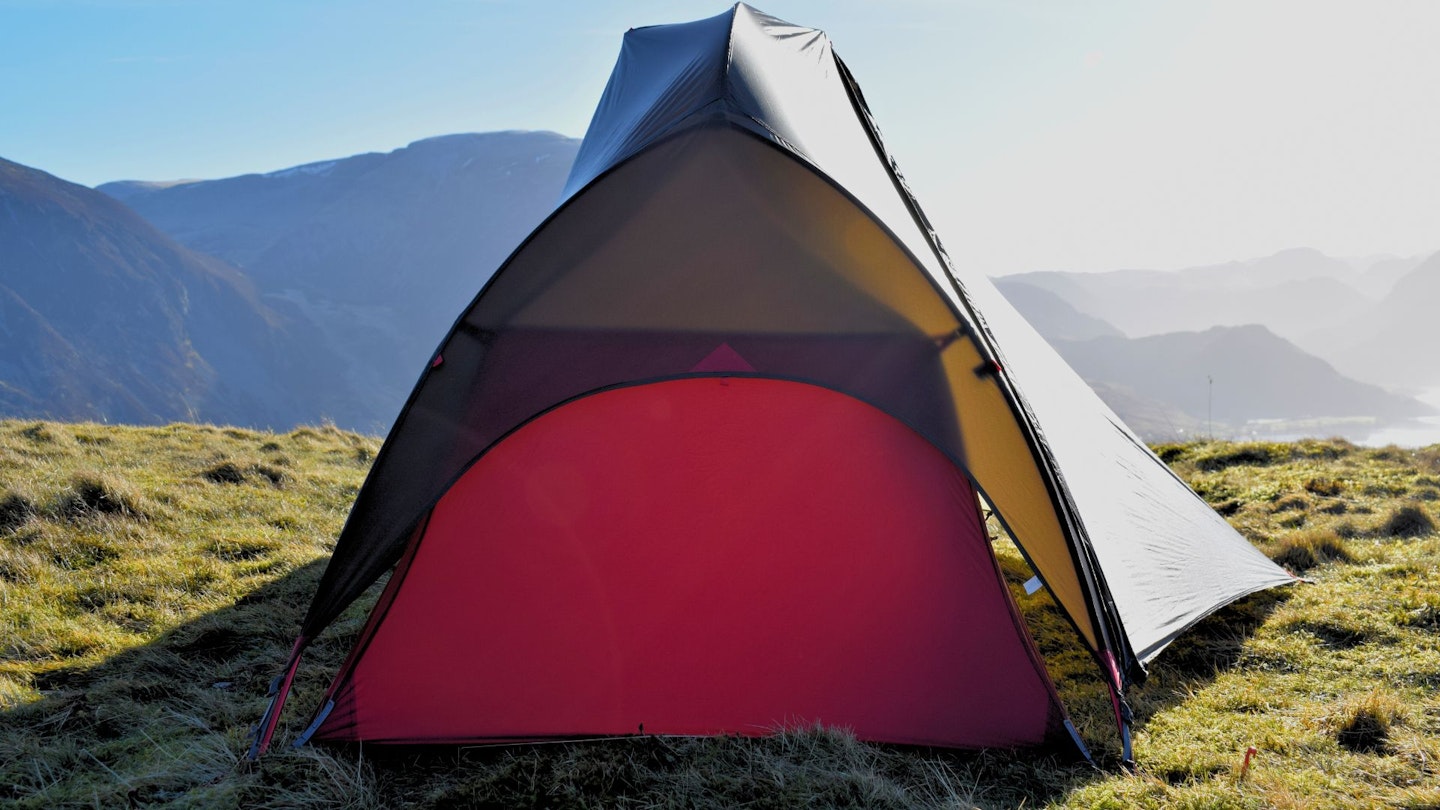
I hadn’t really got it pegged down securely or appropriately, and the winds were ferocious, but – if nothing else – it proved that this tent is vulnerable to “catching” the wind.
However, I’d never attempt to pitch in these kind of conditions while in the fells, so judging the tent purely from this experiment wouldn’t be fair. Plus, I’d always pitch a tent in parallel with the wind direction to avoid this effect.
Even when it’s not blowing a hoolie outside, it’s a pretty draughty tent on account of its mesh inner and large gaps around the bottom of the flysheet.
So, I’d go as far as to say that wind protection isn’t a strength of this particular shelter. If you’re after a one-person option for summit wild camps, a tunnel tent may be a better shout.
Weight and packed size
Weighing in at just 909g – 170g lighter than MSR’s previous iteration – the FreeLite 1 will please gram-obsessed campers. Comparing favourably to much of the competition, its low weight makes it an obvious choice for long-distance adventures.
In terms of the individual components, I measured the flysheet at 281g, the inner at 288g, the four guylines at 22g, the seven minimalist pegs at 62g (without fabric pull tabs or loops), the peg bag at 5g, the hub-connected pole at 213g, the pole bag at 10g and the main storage bag at 28g.
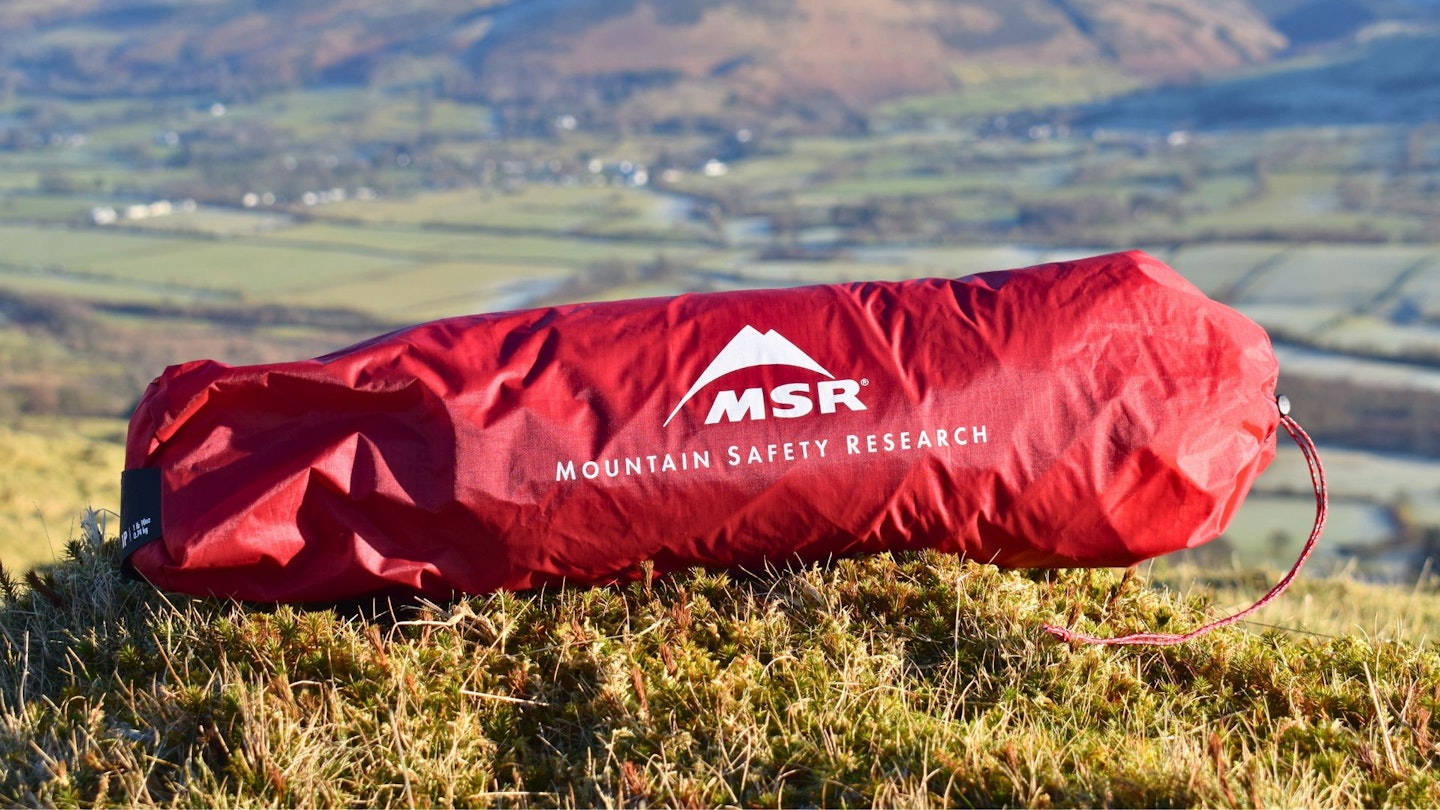
The hub comprises DAC NFL lightweight aluminium poles, designed to keep the gram count down while also being durable to withstand years of abuse from the elements. They are excellent poles.
The FreeLite 1 also stows away into a long and thin, 50x12cm package. Most one-person shelters pack down into a much squatter unit. Which sort is better really comes down to personal preference and where you intend to store it while on the move.
Features
The way the flysheet spreads outwards from the door provides a decent sized, triangular porch area that’s 66cm at its widest. Again, this is another example of the FreeLite’s design making it a more comfortable space than most one-person tents, as there’s actually some space for a sodden backpack.
The inner door itself is pretty decent and features two durable zippers that always close together at the same point. MSR point out that this helps when reaching for the door in the dark, stopping you from fumbling around trying to find the pulls, as can sometimes happen with two-way openings.
The zipper runs relatively straight and smooth compared to most and opening and closing with one hand is a doddle. Another nice touch is the StayDry rain gutter on the outer door, which stopped rain dripping onto me whenever I passed through.
The internal storage pockets have the added innovation of cable ports, allowing me to keep my tech connected and organised, while overhead pockets provide a good place to stash headlamps and the like.
Verdict
The MSR FreeLite 1 is a first-rate ultralight tent for solo backpacking with a superb space-to-weight ratio – but it’s not perfect.
See our list of the best camping tents for a wider choice of options.
Shop this product
About the author
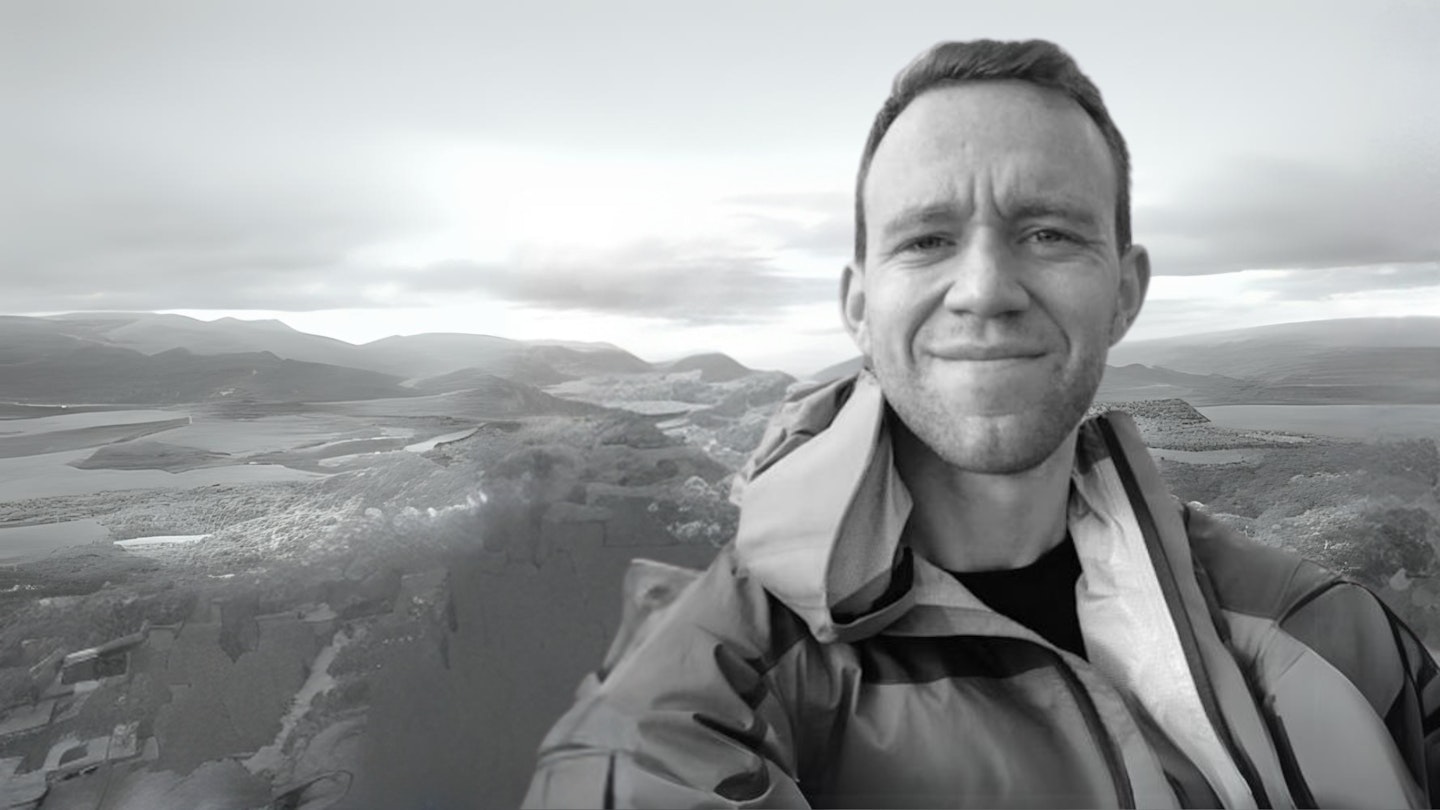
James Forrest is one of our key freelance writers and gear testers. He has undertaken many long-distance hiking trips around the UK and Europe, and is one of the most knowledgeable experts around on backpacking tents.
James regularly conducts many of our tent and camping gear tests.

